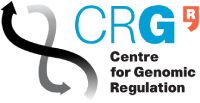About the Project
"ChromDesign” is a European innovative and interdisciplinary Research and Training network, which aims to characterize the impact of the 3D chromatin organization on gene regulation during cellular differentiation and in several human disorders, and to train junior researchers in the biomedical field, either in academia or in the private sector. The "ChromDesign" training programme will foster mobility across countries, disciplines and sectors. Through secondments and network-events, we will ensure that all ESRs have opportunities for exposure to different disciplines and environments: academia, industry, design and communication, hospitals, publishing, and non-for-profit funding entities. Most network training will be based around five summer and winter schools that combine hands-on research workshops, academic lectures as well as transferable skills, and innovation and entrepreneurship training sessions.
Description subproject ESR10:
Objectives:
Despite new sequencing technologies and other methods of genome analysis, congenital malformations remain without a molecular diagnosis in a majority of individuals. It is our aim to increase the number of diagnosable cases by using novel technologies (HiC) for the detection of structural variants and abnormal chromatin interactions.
Methodology:
We will grow fibroblasts from patients with congenital malformations. These cells will be subjected to HiC analysis to investigate their genome-wide interaction profile. To determine the variability of HiC in fibroblasts samples we will perform HiC in a sufficient number of control cell lines. The data will be bioinformatically analysed and particular loci modelled together with WP4. Data will be compared and variants identified based on whole genome sequencing of patient samples. Detected abnormalities that are considered potentially pathogenic will be tested in mouse models.
Expected Results:
A new dimension of analysis that will be able to detect structural variants at an unprecedented sensitivity and accuracy. In addition, detection of abnormal chromatin interactions either due to structural variants or other causes that may explain the disease.
Planned Secondments:
CNAG-CRG, Spain (6 months): Data analysis and modelling
CNRS, France (3 months): HiC improvement
Eligibility criteria:
• Applicants may be a national of a Member State, of an Associated Country or of any other third country.
• The candidate should hold an academic degree that enables her/him to undertake doctoral studies. Preference is given to applicants with MSc or equivalent degree.
• At the time of recruitment* by the host organisation, candidates must be in the first four years (full-time equivalent research experience**) of their research careers and not yet have been awarded a doctoral degree.
• At the time of recruitment* by the host organisation, candidates must not have resided or carried out their main activity (work, studies, etc.) in the country of their host organisation for more than 12 months in the 3 years immediately prior to the reference date.
PLEASE NOTICE THAT AN APPLICATION IS SOLELY POSSIBLE VIA THE ONLINE APPLICATION FORM (WWW.CHROMDESIGN.EU)
Funding Notes
• Depending on the hosting institute, individual projects start between November 2018 and August 2019.
Duration
• The positions are fully funded for 36 months by the European Comission under the H2020 Marie Curie Innovative Training Network Programme.
Salary
• Marie Curie ITNs provide a highly competitive salary to the ESR, including a competitive monthly living and mobility allowance and (if eligible) a monthly family allowance.
References
Andrey G, Schöpflin R, Jerković I, Heinrich V, Ibrahim DM, Paliou C, Hochradel M, Timmermann B, Haas S, Vingron M, Mundlos S. Characterization of hundreds of regulatory landscapes in developing limbs reveals two regimes of chromatin folding. Genome Res. 2017 Feb;27(2):223-233.
Franke M, Ibrahim DM, Andrey G, Schwarzer W, Heinrich V, Schöpflin R, Kraft K, Kempfer R, Jerković I, Chan WL, Spielmann M, Timmermann B, Wittler L, Kurth I, Cambiaso P, Zuffardi O, Houge G, Lambie L, Brancati F, Pombo A, Vingron M, Spitz
F, Mundlos S. Formation of new chromatin domains determines pathogenicity of genomic duplications. Nature. 2016 Oct 13;538(7624):265-269.
Will AJ, Cova G, Osterwalder M, Chan WL, Wittler L, Brieske N, Heinrich V, de Villartay JP, Vingron M, Klopocki E, Visel A, Lupiáñez DG, Mundlos S. Composition and dosage of a multipartite enhancer cluster control developmental expression of Ihh (Indian hedgehog). Nature Genetics. 2017 Oct;49(10):1539-1545.

 Continue with Facebook
Continue with Facebook

